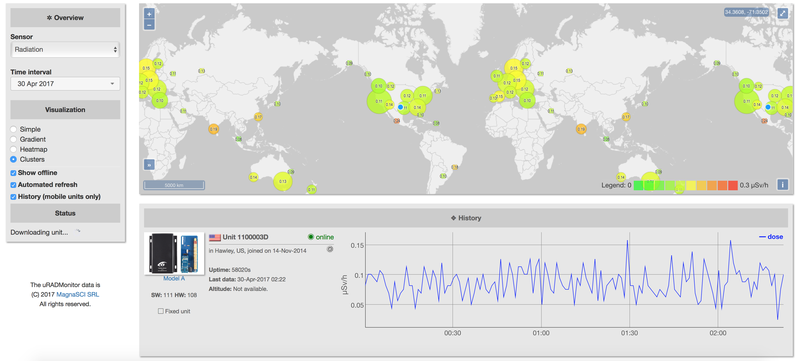uRADMonitor | And YOU can Help Fight Fires!
Awards & Nominations
uRADMonitor has received the following awards and nominations. Way to go!
The Challenge | And YOU can Help Fight Fires!
Global Environmental Monitoring Network
Global network of IOT devices of proprietary design, to detect pollution, wild fires, radiation, UV Exposure. Almost 700 units worldwide, +40 countries

The recent advancements in technology bring significant benefits to the quality of life. However many global problems remain unresolved, such as hunger, poverty, inadequate living conditions, lack of education, lack of equal opportunities of development, incurable diseases, pollution, drought, wars.
Humanity seems unable to overcome a comfort zone that translates into a forced balance between costs and results: we act only when it is too late, every single time. One possible solution comes from the progress of innovative technologies that alter the balance between costs and results by implementing more efficient methods or have a direct impact on people's quality of life by addressing and solving new problems.
Solving the problem
We believe in building something that matters. Something that has a positive impact on the lives of many. This is why we have created uRADMonitor, because our bodies are fragile and because pollution is harmful both to us and to the environment. So we have designed a worldwide network of automated monitors, as a first line detection and warning system against the harmful chemical and physical factors around us.
The hardware
We have designed 5 hardware devices, optimised for low power usage, equipped with Internet connectivity and advanced sensors. The sensors include temperature, pressure, humidity, volatile organic compounds, formaldehyde, carbon dioxide, ionising radiation (alpha, beta, gamma, x-rays), carbon monoxide, ozone, sulphur dioxide, nitrogen dioxide and a few more. All these are part of the hardware devices we designed and produced already. The Nasa Space Apps Hackathon allowed us to create a prototype for a new sensor to map UV exposure in mW/cm^2, contributing one additional important parameter to the environmental data we collect.
The server
The server is the centralized system receiving and processing environmental data and is made of a backend and a frontend, running on separate machines. The backend features an efficient big-data-ready database implementation and RESTFul APIs for robust data access. The frontend was shaped as a modern user interface to allow easy access to the data together with a mobile app.
The NASA Space Apps challenges
What we build so far comes to solve 4 of the challenges:
- And YOU can Help Fight Fires! Because we monitor CO2 and PM2.5 , two indicators of fires, and depending on wind conditions, the sensor sensitivity allows us to detect a fire a few hundreds of meters away. The long range, low power internet connectivity such as the LoRAWAN that we use in our hardware, permits remote monitoring while running on solar panels.
- Mayday, Mayday, Mayday! Because we monitor ionising radiation, and can sense variations in the flux of particles part of the solar wind.
- Live Smart , because uRADMonitor has an interconnected IOT topology at its core for Smart Cities, Smart homes, a complete Live Smart solution. We did a pilot implementation in Alba Iulia, together with Orange.
- Let’sgo to the Beach, with the UV wearable sensor prototype that we built in the Nasa Space Apps Timisoara Hackathon, to monitor UV exposure and inform the user of the dangerous levels, while feeding all data online to the uRADMonitor backend, so others can get real time notifications to plan their outdoors jobs.
SpaceApps is a NASA incubator innovation program.